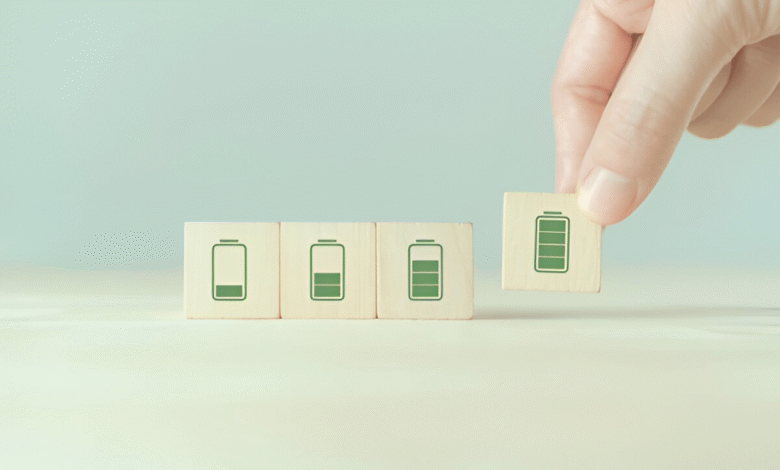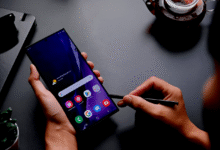
In today’s digital age, smartphones are essential tools for communication, work, and entertainment. However, one of the biggest frustrations users face is poor battery life. Whether you rely on your device for productivity or leisure, constantly searching for a charger can be inconvenient. Fortunately, there are proven ways to extend your smartphone’s battery life through smart charging habits, software adjustments, and mindful usage.
Maximizing battery life isn’t just about making it through the day it’s also about preserving long-term battery health. Over time, lithium-ion batteries degrade due to factors like heat, charging cycles, and improper usage. By following best practices, you can slow this degradation and keep your phone running efficiently for years. This guide explores practical tips to optimize battery life, helping you get the most out of every charge.
How to Maximize Battery Life on Your Smartphone
Understanding Smartphone Battery Basics
Smartphone batteries, primarily lithium-ion or lithium-polymer, degrade over time due to charge cycles, heat, and usage patterns. While you can’t stop natural wear, adopting better charging practices can slow degradation. Avoid frequent full discharges; instead, keep your battery between 20% and 80% for optimal longevity. Fast charging, though convenient, generates heat, which harms the battery. Using a standard charger when possible can reduce long-term damage.
Optimizing Display Settings
The display is one of the biggest battery life drainers. Reducing screen brightness or enabling auto-brightness can significantly conserve power. OLED screens benefit from dark mode, as black pixels are turned off, consuming less energy. Additionally, shortening the screen timeout duration prevents unnecessary battery drain when the phone is idle. High refresh rates (e.g., 120Hz) enhance smoothness but consume more power—consider lowering it if battery life is a priority.
Managing Background Apps and Processes
Background apps silently consume power by refreshing content, tracking location, or running services. Regularly closing unused apps and restricting background activity in settings can help. On Android, use “Battery Optimization” to limit background processes, while iOS users can enable “Low Power Mode” to reduce background app refresh. Disabling unnecessary notifications also minimizes wake-ups, preserving battery life.
Controlling Connectivity Features
Wireless radios like Wi-Fi, Bluetooth, GPS, and mobile data constantly search for signals, draining the battery. Turn off Wi-Fi and Bluetooth when not in use, and switch to airplane mode in low-signal areas to prevent excessive power consumption. GPS is particularly demanding use it sparingly or switch to battery-saving location modes. Additionally, 5G consumes more power than 4G; if speed isn’t critical, sticking to LTE can extend battery life.
Updating Software Regularly
Manufacturers release updates that often include battery life optimizations and bug fixes. Keeping your OS and apps updated ensures efficient power management. Outdated software may have memory leaks or background processes that drain the battery unnecessarily. Enable automatic updates or periodically check for new versions.
Avoiding Extreme Temperatures
Batteries degrade faster in extreme heat or cold. Avoid leaving your phone in direct sunlight or freezing conditions. High temperatures accelerate chemical reactions inside the battery, reducing its lifespan, while cold temperatures temporarily decrease performance. Store your device in a moderate environment to maintain battery health.
Using Battery-Saving Modes
Most smartphones offer built-in battery-saving features. Android’s “Battery Saver” and iOS’s “Low Power Mode” reduce background activity, limit performance, and disable non-essential functions to extend usage. Activating these modes when your battery is low can provide extra hours of operation.
Monitoring Battery Usage
Check your phone’s battery usage statistics to identify power-hungry apps. Uninstall or restrict apps that consume excessive power. Some apps run background services even when closed—force-stopping them or adjusting permissions can help.
Future Aspects of Battery Life on Your Smartphone
Solid-State Batteries
One of the most promising developments in battery technology is the shift from lithium-ion to solid-state batteries. These batteries use solid electrolytes instead of liquid ones, offering higher energy density, faster charging, and improved safety. With no risk of leakage or overheating, solid-state batteries could significantly extend battery life while reducing degradation over time.
AI-Powered Battery Optimization
Artificial Intelligence (AI) is expected to play a major role in battery life management. Future smartphones may use machine learning to analyze user habits and automatically adjust power consumption. AI could optimize background processes, screen brightness, and connectivity features in real time, ensuring maximum efficiency without manual intervention.
Graphene and Advanced Battery Materials
Graphene, a super-thin and highly conductive material, could revolutionize smartphone batteries. It enables ultra-fast charging, higher capacity, and better heat dissipation. Researchers are also exploring other advanced materials, such as silicon anodes, to replace graphite, further increasing energy storage and lifespan.
Self-Healing Batteries
Scientists are developing self-healing battery technologies that can repair minor degradations over time. These batteries use special polymers or nanomaterials to automatically fix micro-cracks in electrodes, prolonging their lifespan. This innovation could reduce the need for frequent battery replacements.
Wireless and Over-the-Air Charging
Future smartphones may support true wireless charging, eliminating the need for cables or charging pads. Companies are experimenting with long-distance wireless charging using radio waves or infrared beams. Additionally, over-the-air (OTA) charging could allow devices to recharge automatically when near a power source, ensuring uninterrupted usage.
Solar-Powered and Kinetic Charging
Eco-friendly charging solutions, such as solar-powered smartphone panels and kinetic energy harvesting, could supplement traditional charging. Future devices may feature built-in solar cells or motion-based charging (using movement to generate power), reducing reliance on electrical outlets.
Software and OS-Level Efficiency Improvements
Operating systems will continue to evolve with better battery optimization features. Future updates may include smarter adaptive battery management, deeper sleep modes for idle apps, and more granular power controls. These improvements will help users extend battery life without sacrificing performance.
Modular and Replaceable Batteries
With growing demand for sustainability, smartphone brands might bring back user-replaceable batteries. Modular designs would allow easy battery swaps, reducing e-waste and giving users more control over their device’s longevity.
Advanced Cooling Systems
Overheating remains a major cause of battery degradation. Future smartphones may incorporate advanced cooling systems, such as vapor chambers or thermoelectric materials, to maintain optimal temperatures and preserve battery health.
Integration with Smart Ecosystems
As smart homes and IoT devices become more prevalent, smartphones could optimize battery life by offloading tasks to other connected devices. For example, heavy computations could be handled by a home server, reducing strain on the phone’s battery.
Read More: How to Protect Company Data with Endpoint Security
Conclusion
Maximizing your smartphone’s battery life requires a combination of smart habits and proper device management. By adjusting settings like screen brightness, disabling unnecessary background processes, and using battery-saving modes, you can significantly extend daily usage. Additionally, adopting healthy charging practices such as avoiding extreme temperatures and keeping your battery between 20% and 80%—helps preserve long-term battery health.
While no battery lasts forever, these strategies can help you get the most out of your smartphone before needing a recharge or replacement. Small changes in how you use and charge your device can lead to noticeable improvements in battery life, reducing frustration and keeping you connected longer. Start implementing these tips today to enjoy a more reliable and long-lasting smartphone experience.
FAQs
How can I make my smartphone battery last longer?
Reduce screen brightness, close unused apps, disable unnecessary connectivity features, and avoid extreme temperatures.
Does fast charging damage the battery?
Frequent fast charging generates heat, which can degrade the battery over time. Use it sparingly.
Should I charge my phone to 100%?
Keeping the battery between 20% and 80% is ideal for long-term health.
Does dark mode save battery?
Yes, on OLED screens, dark mode reduces power consumption by turning off black pixels.
How often should I replace my smartphone battery?
Most batteries last 2-3 years before significant degradation. Replace it if you notice drastically reduced runtime.











